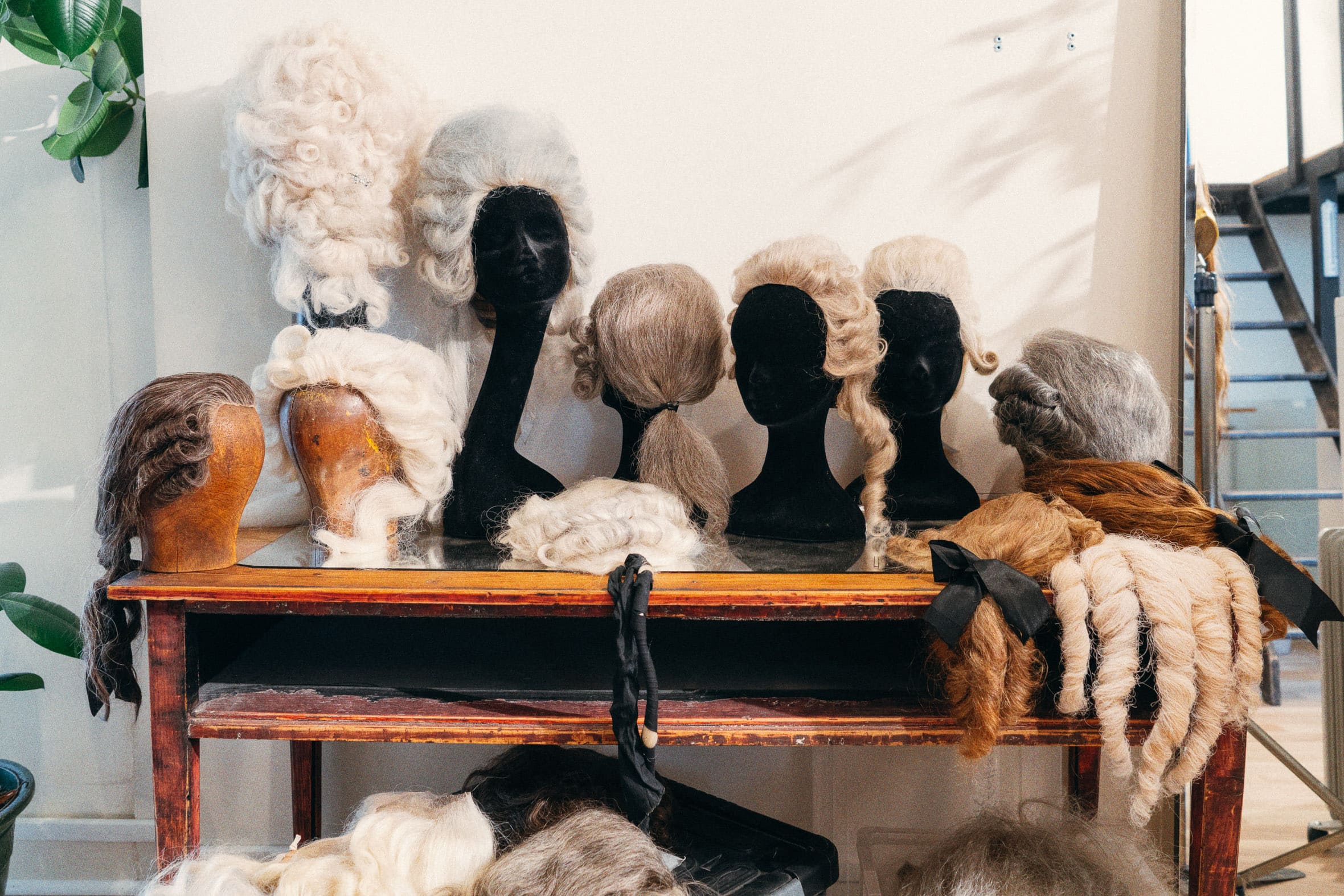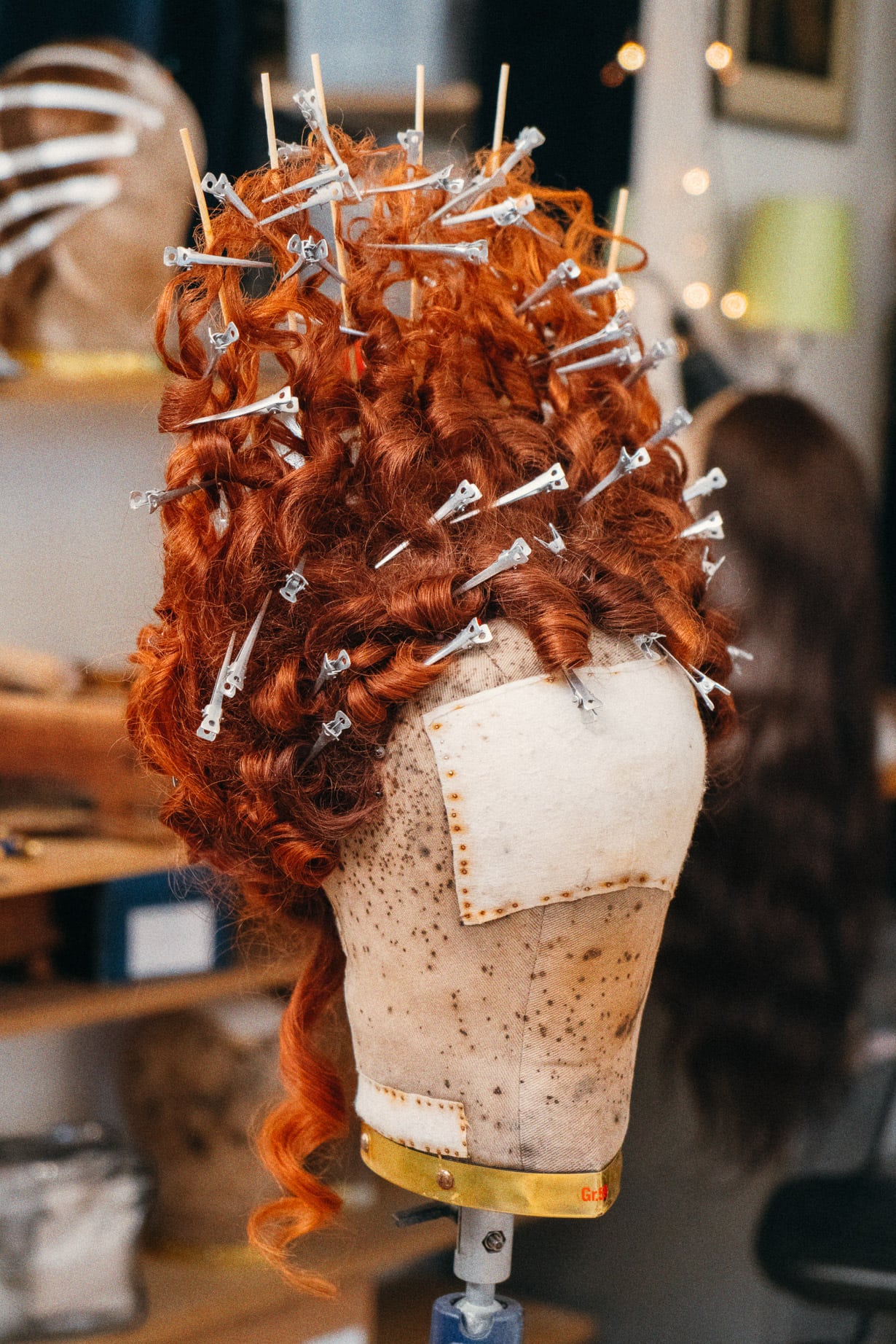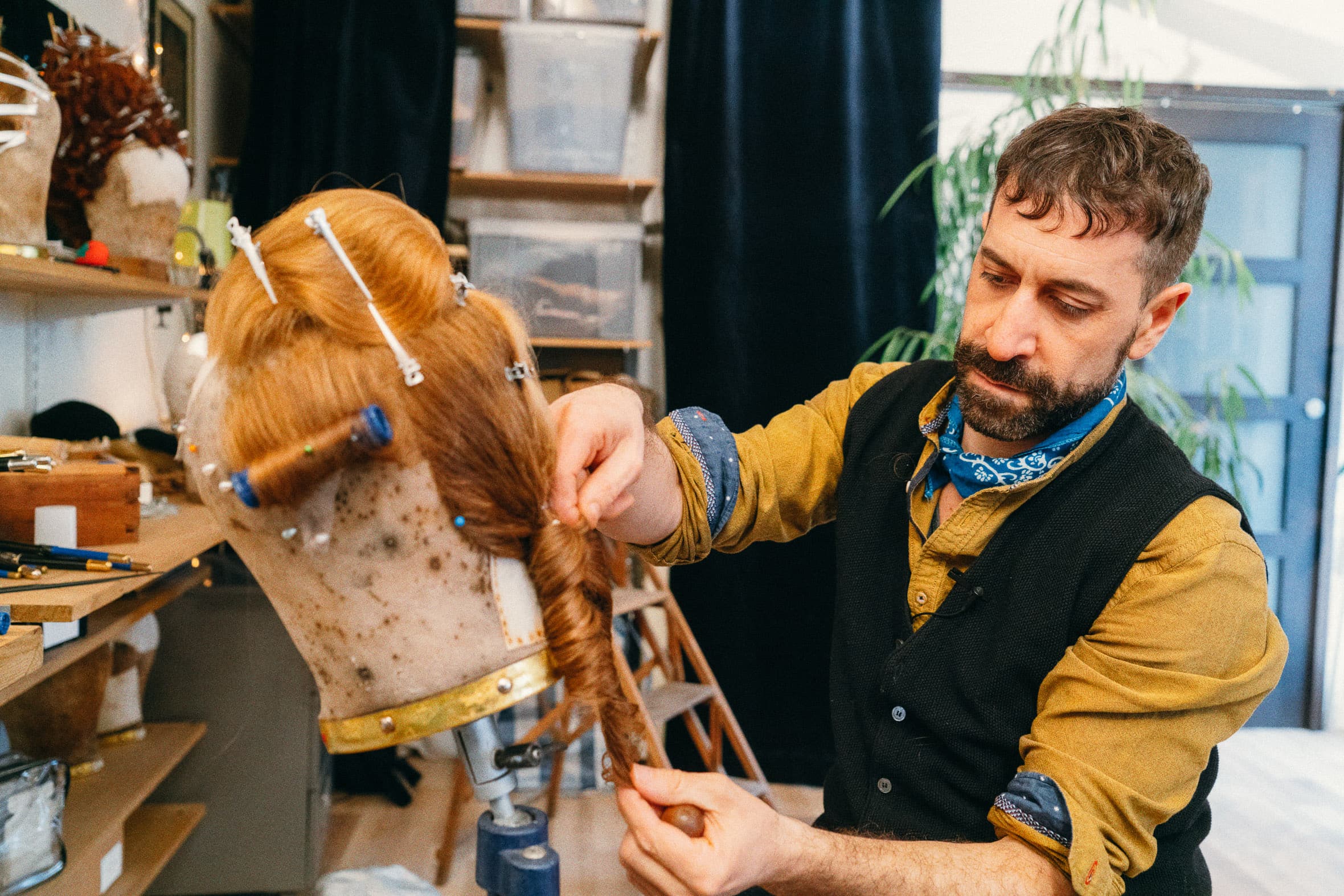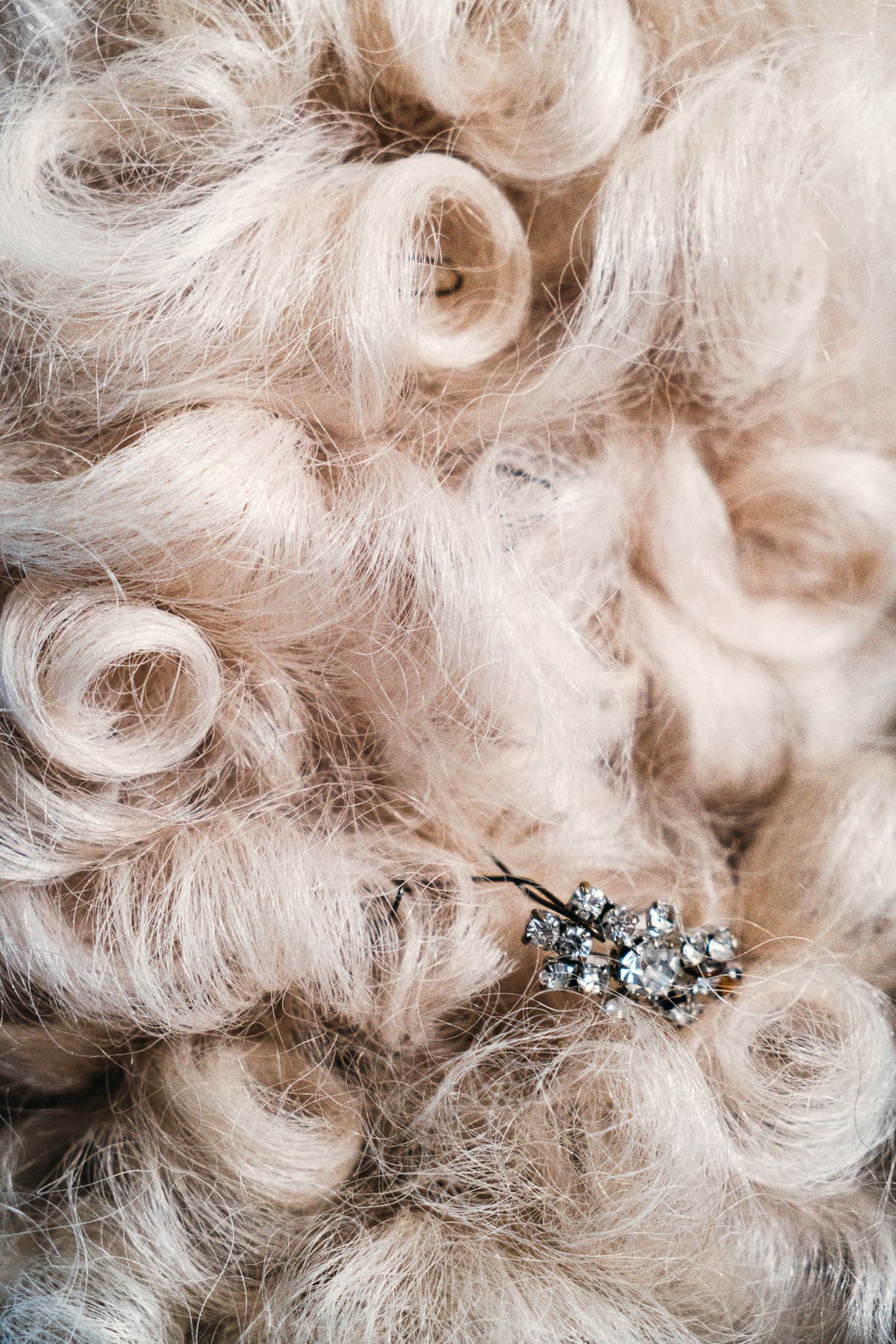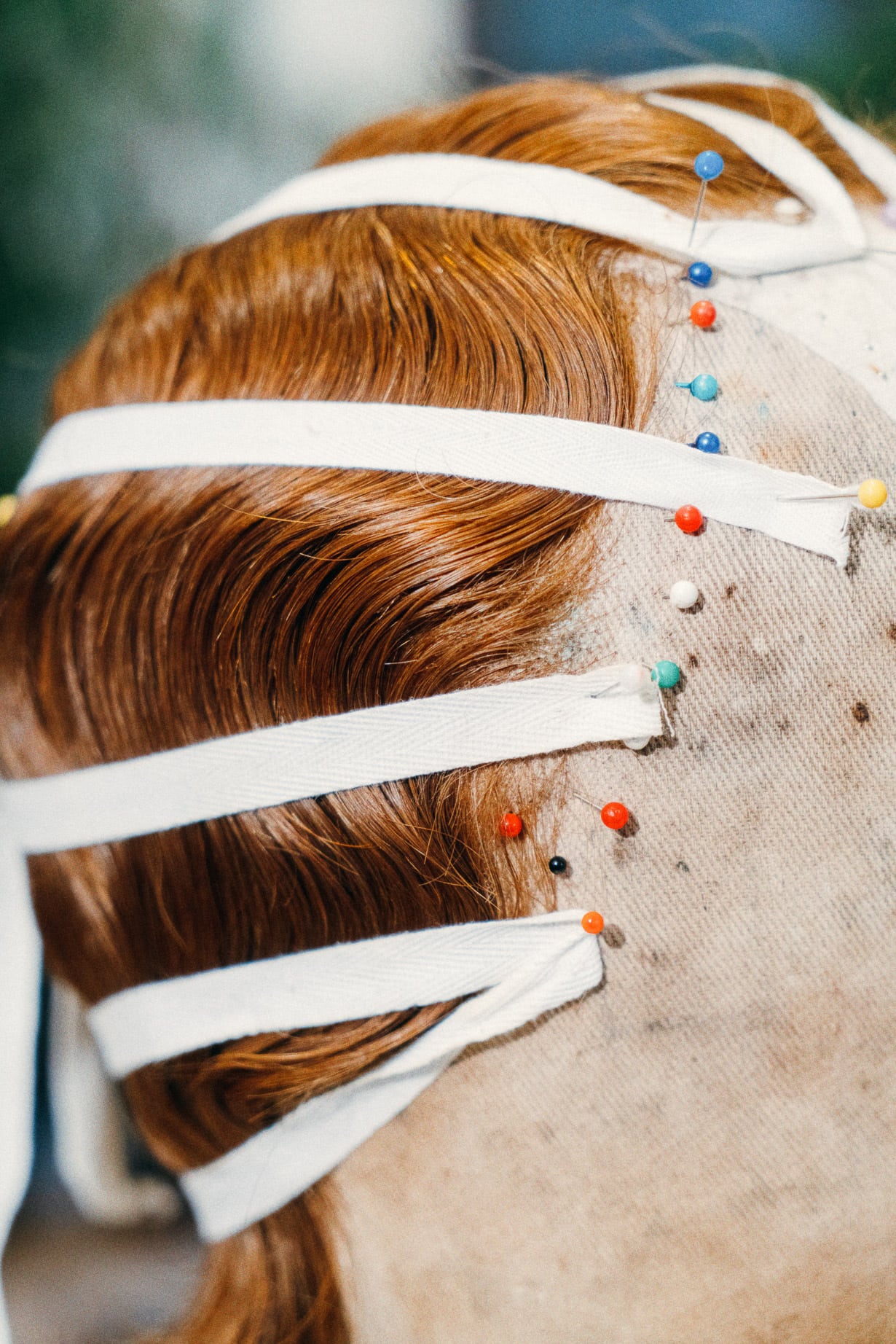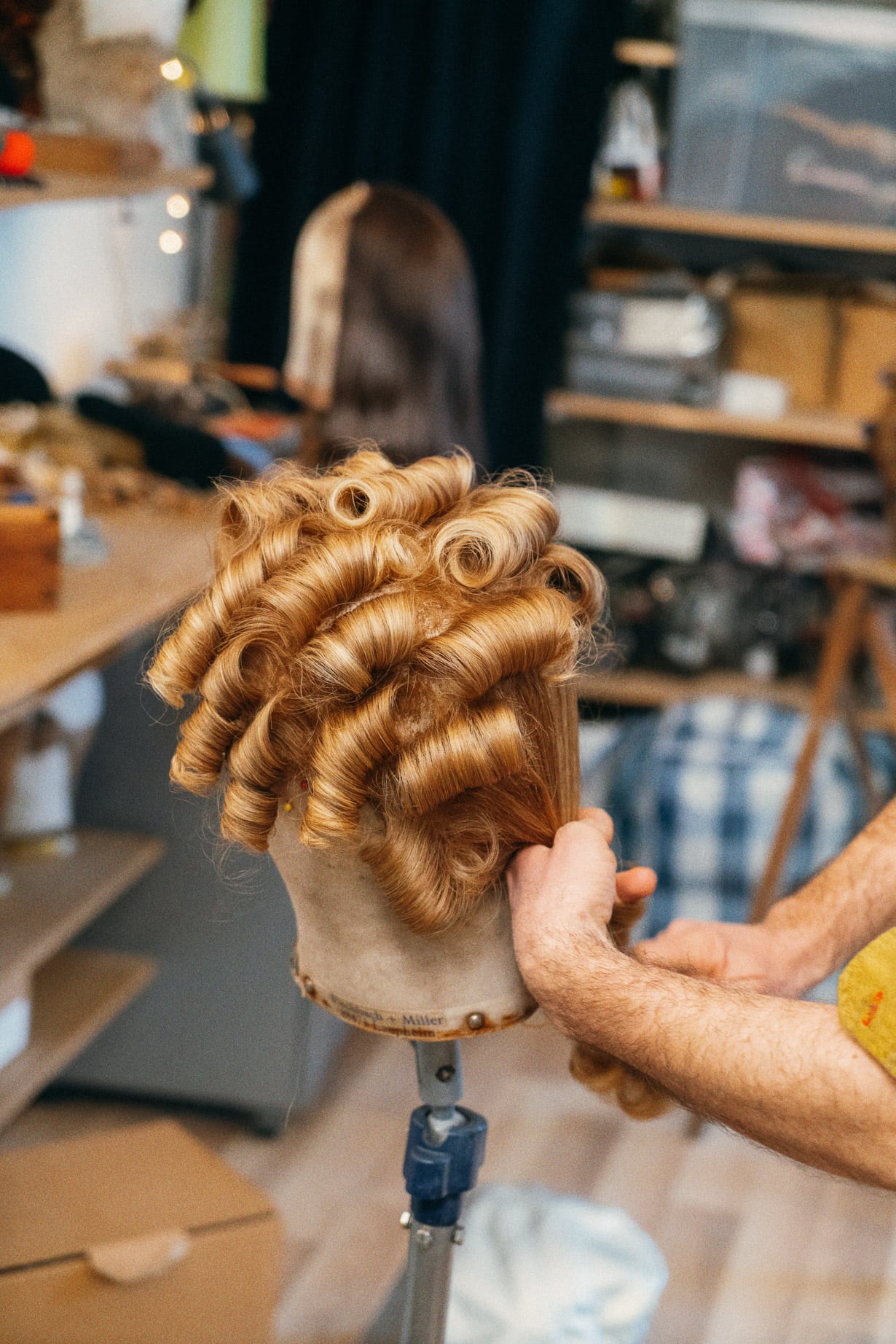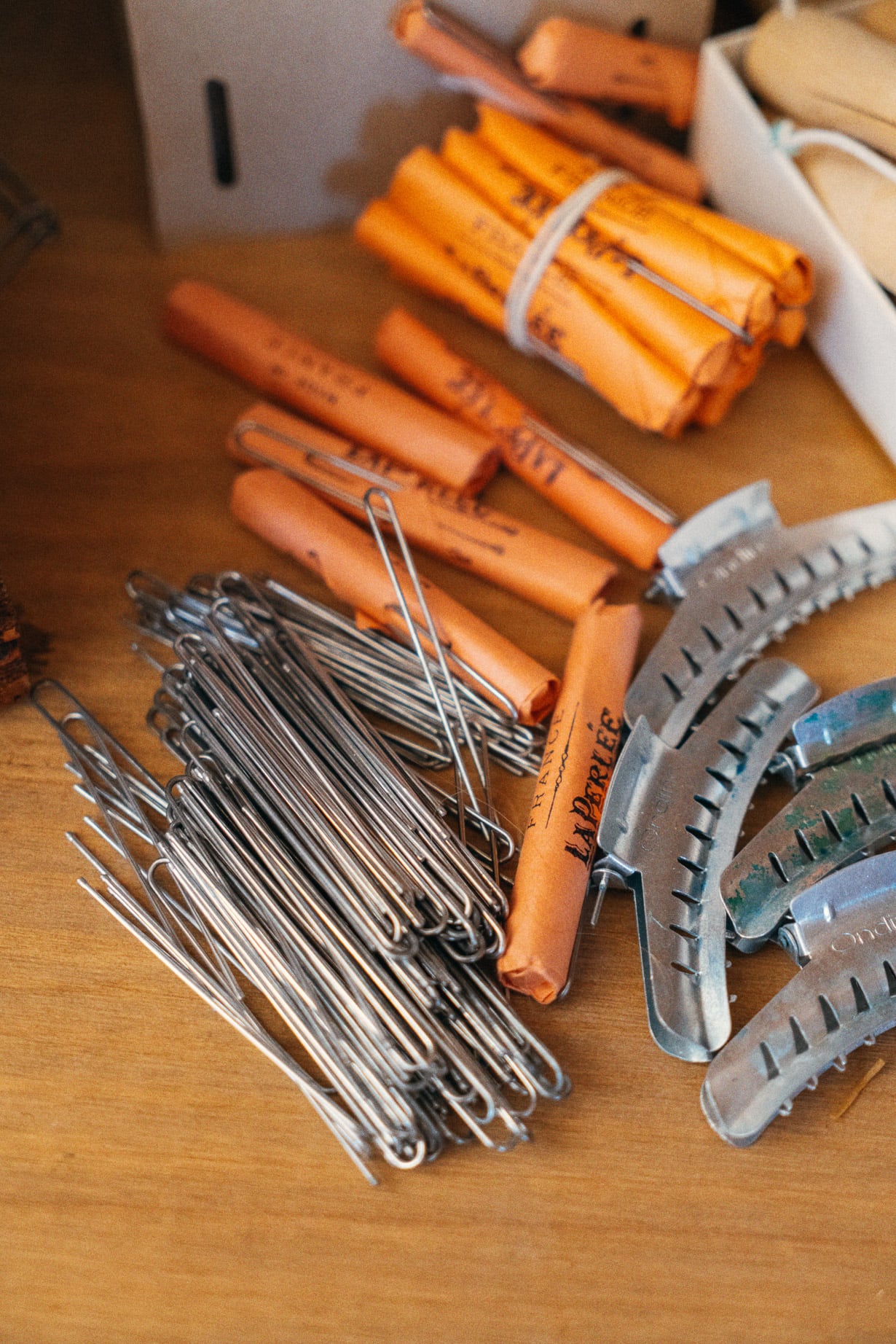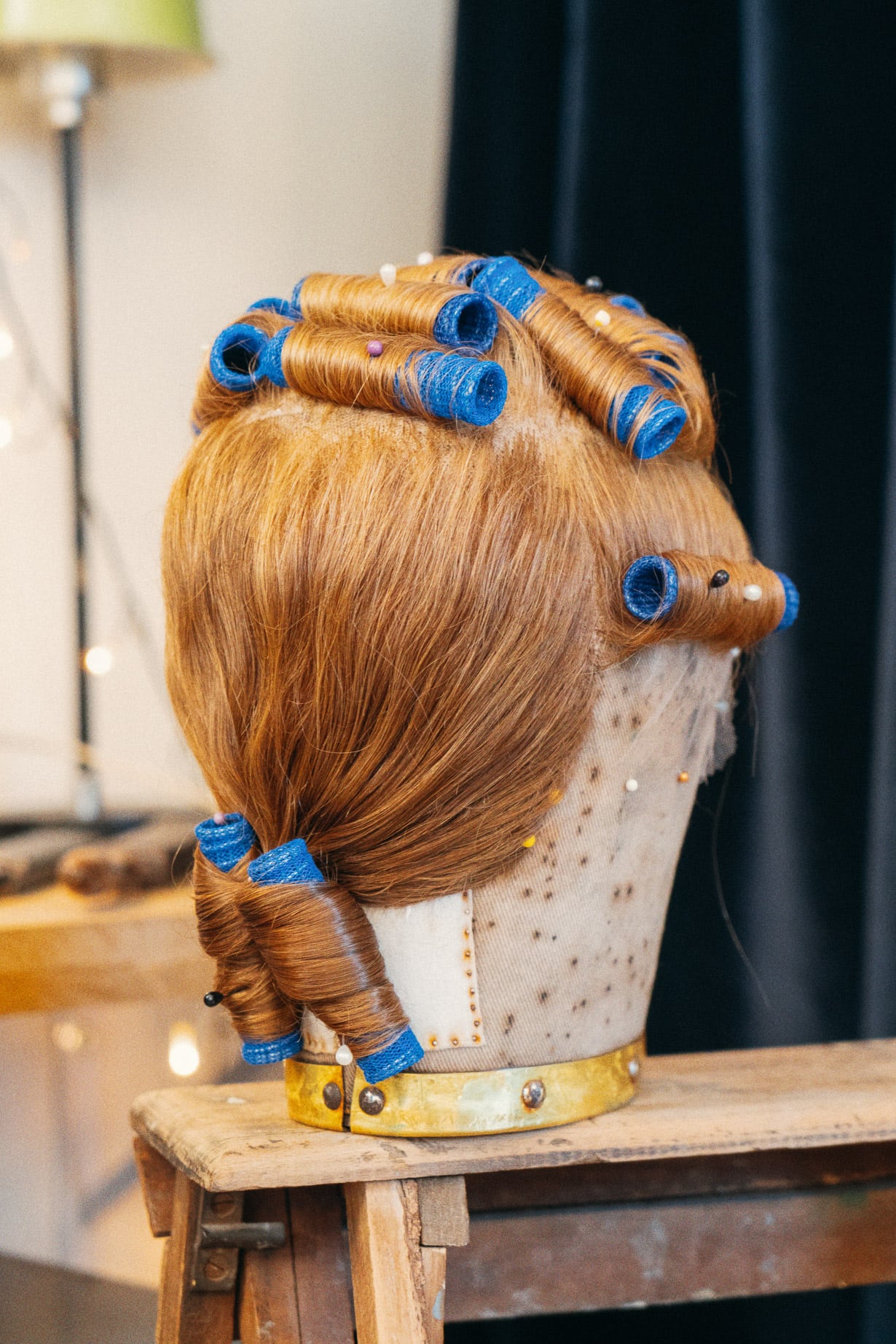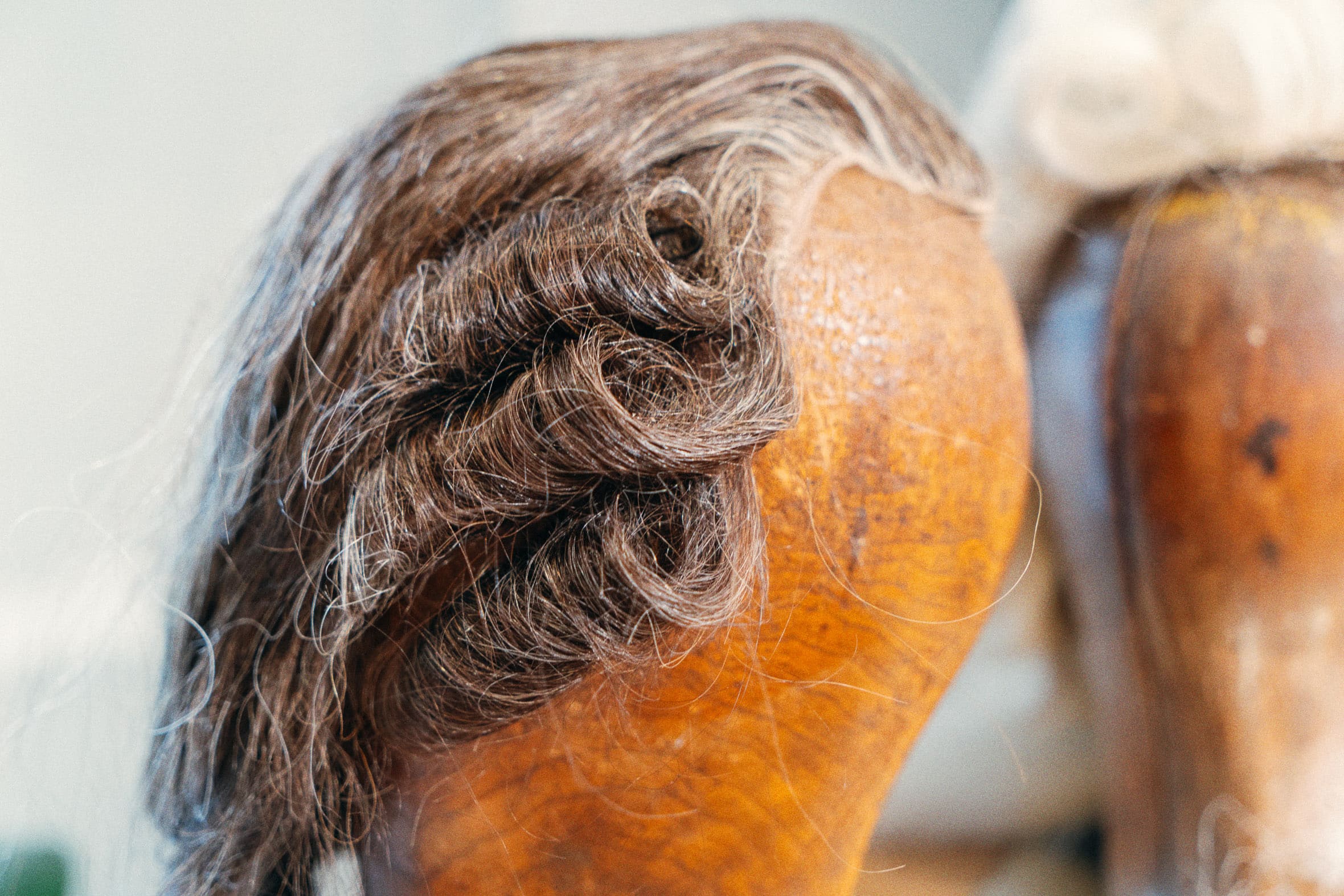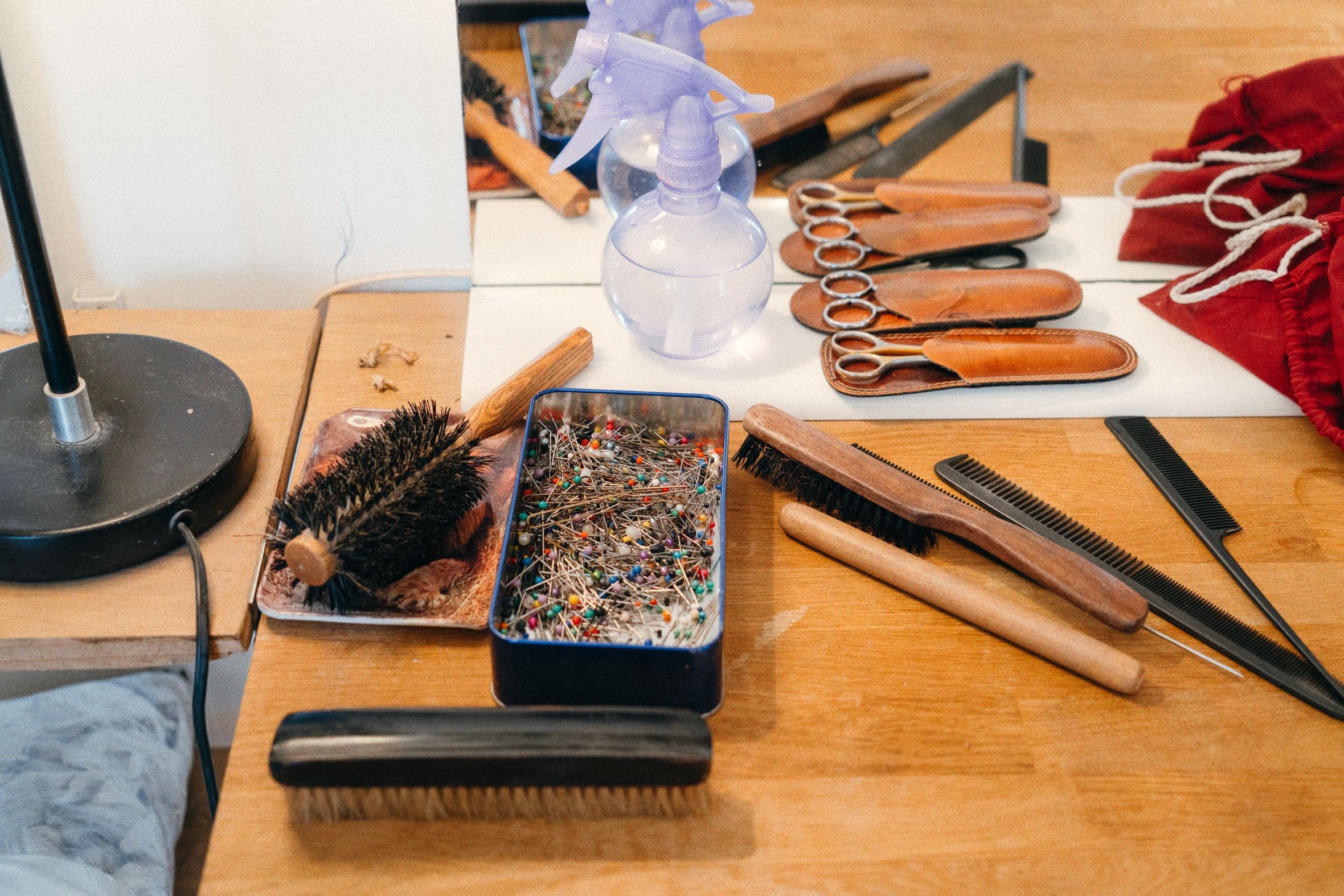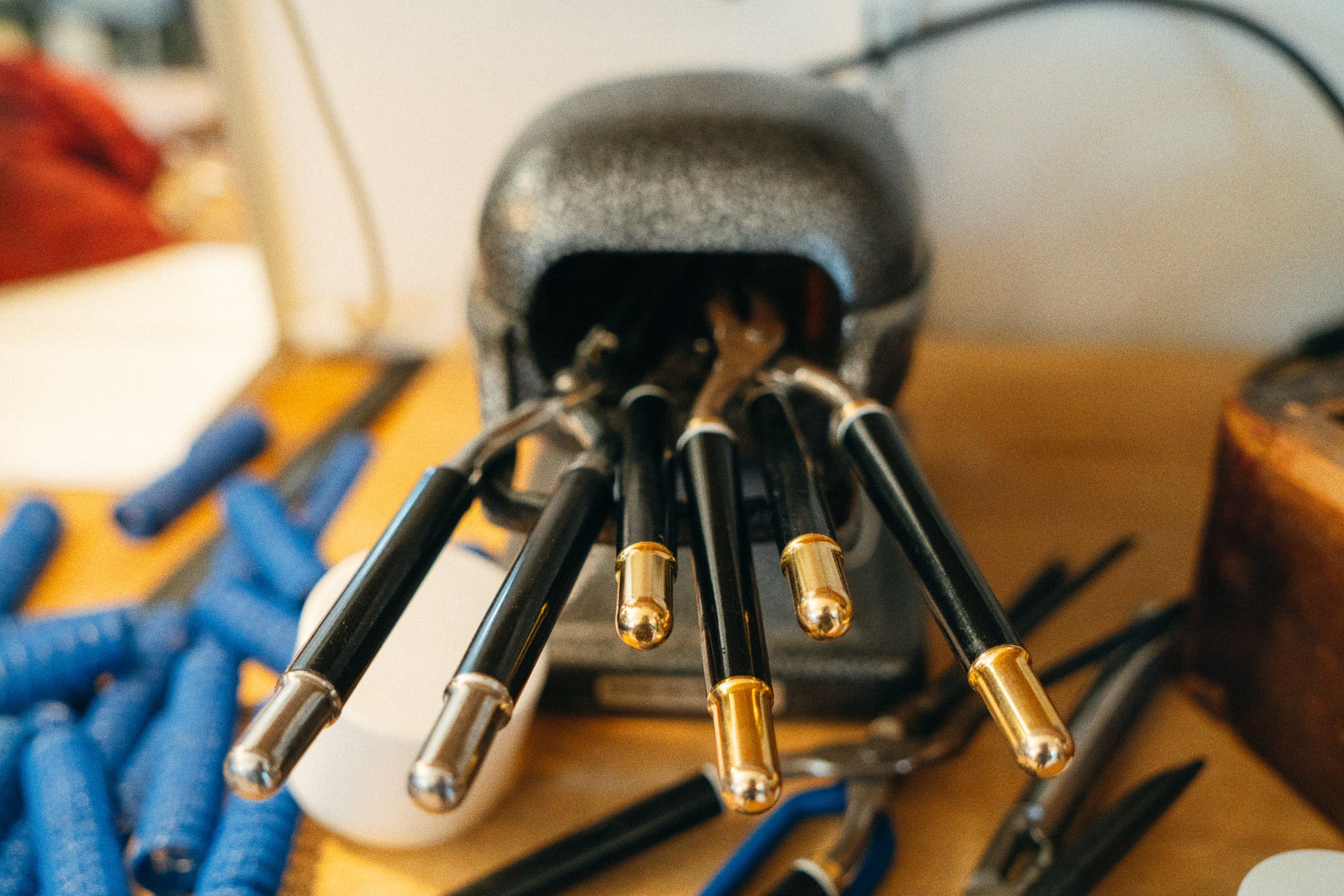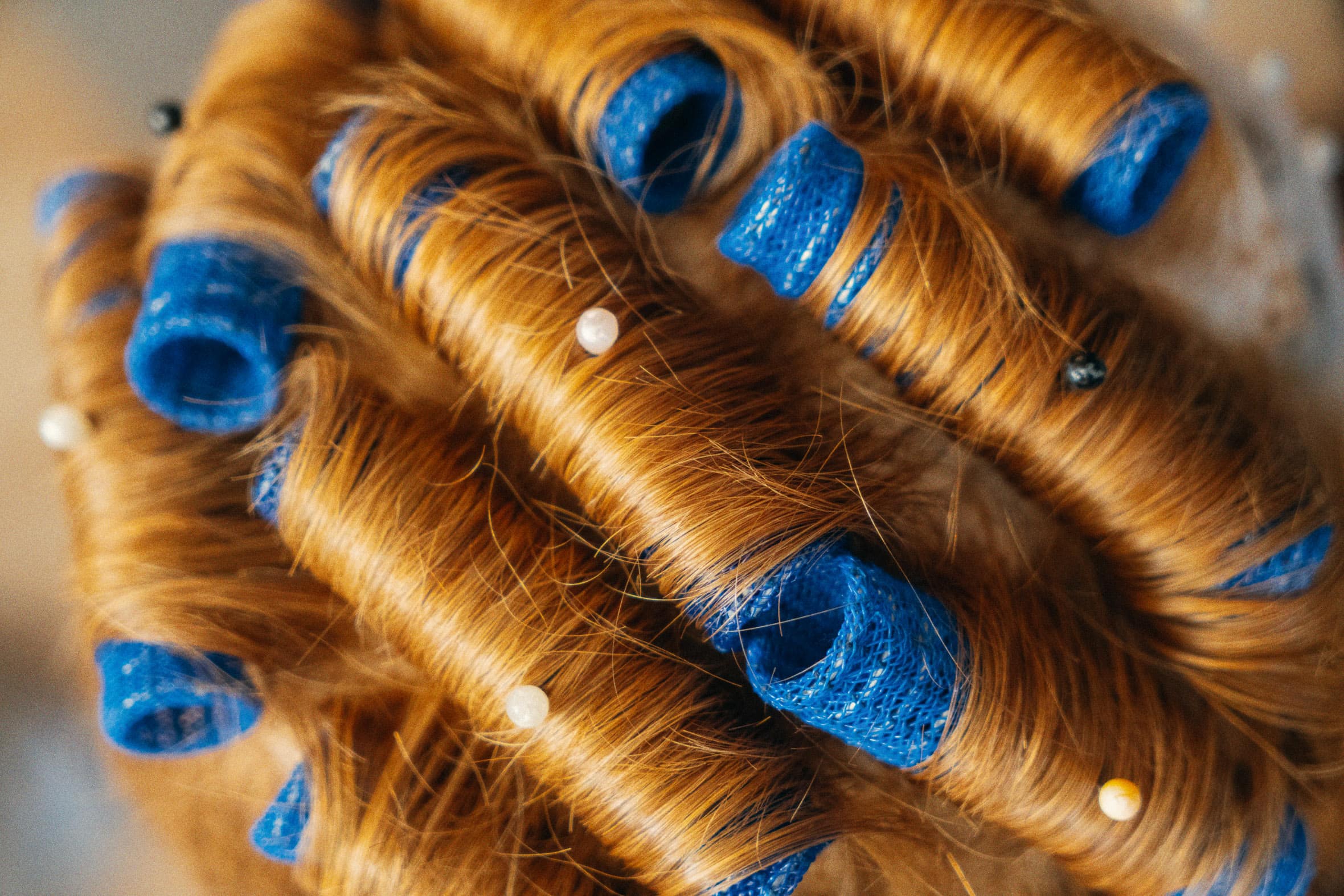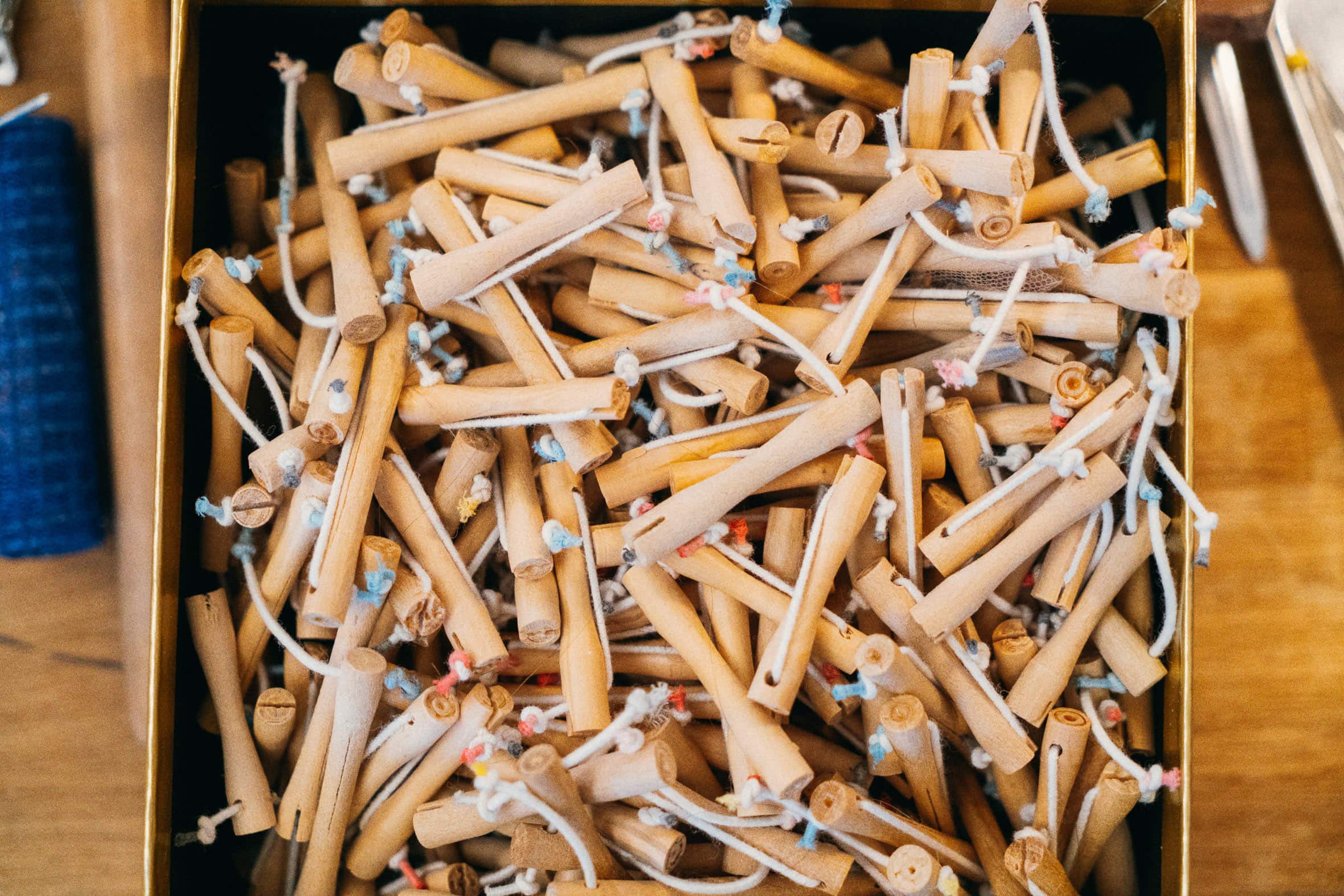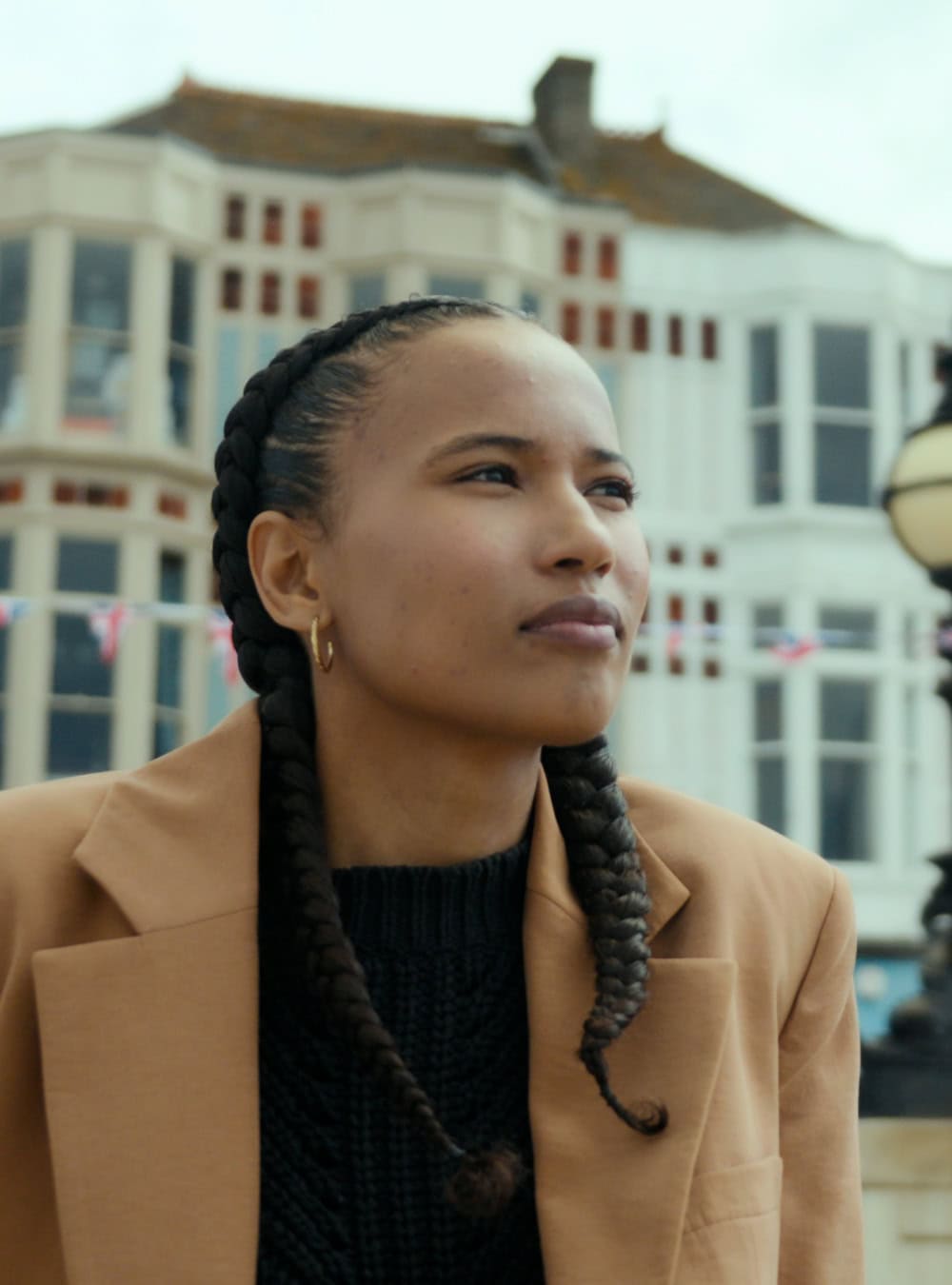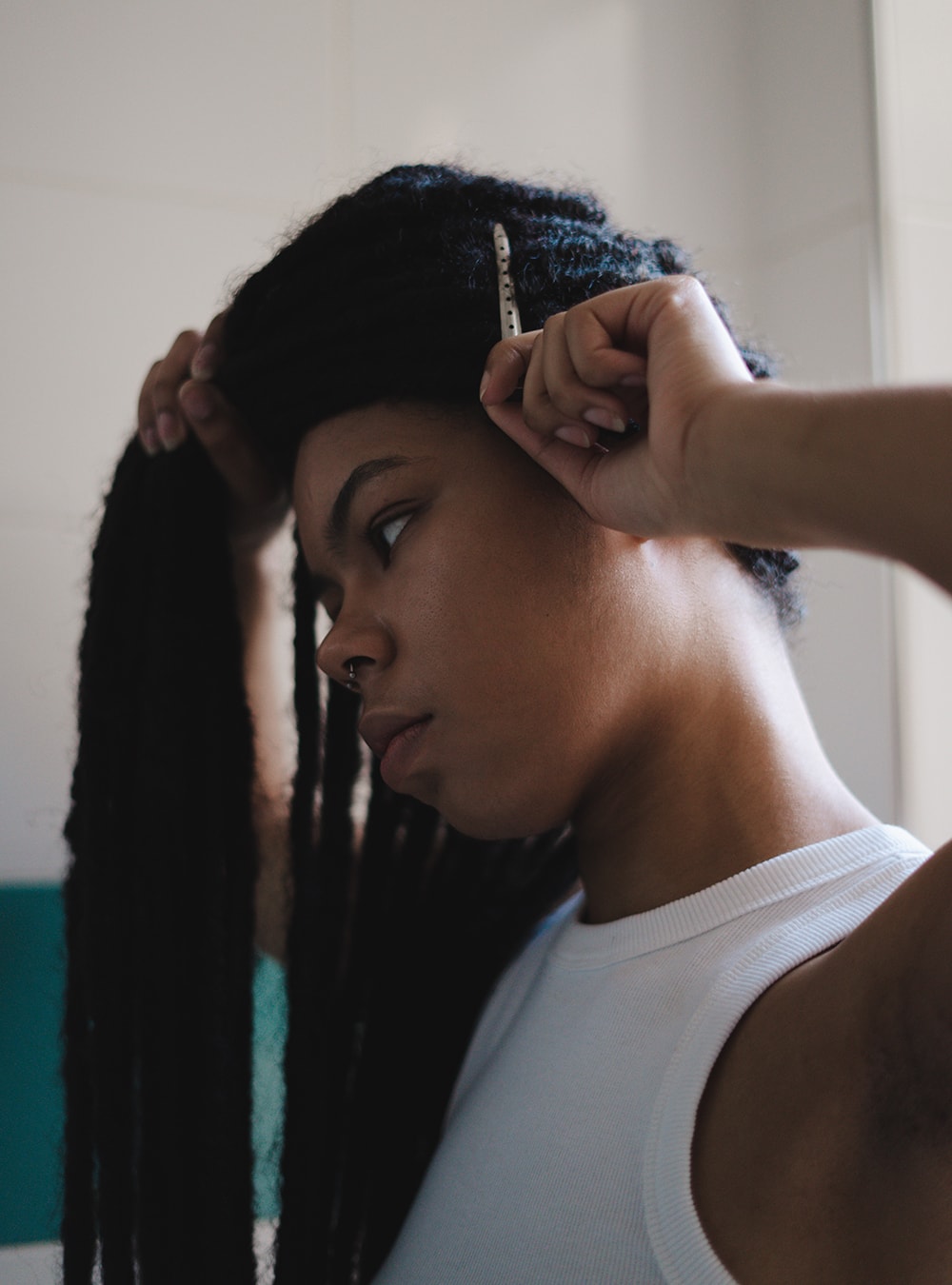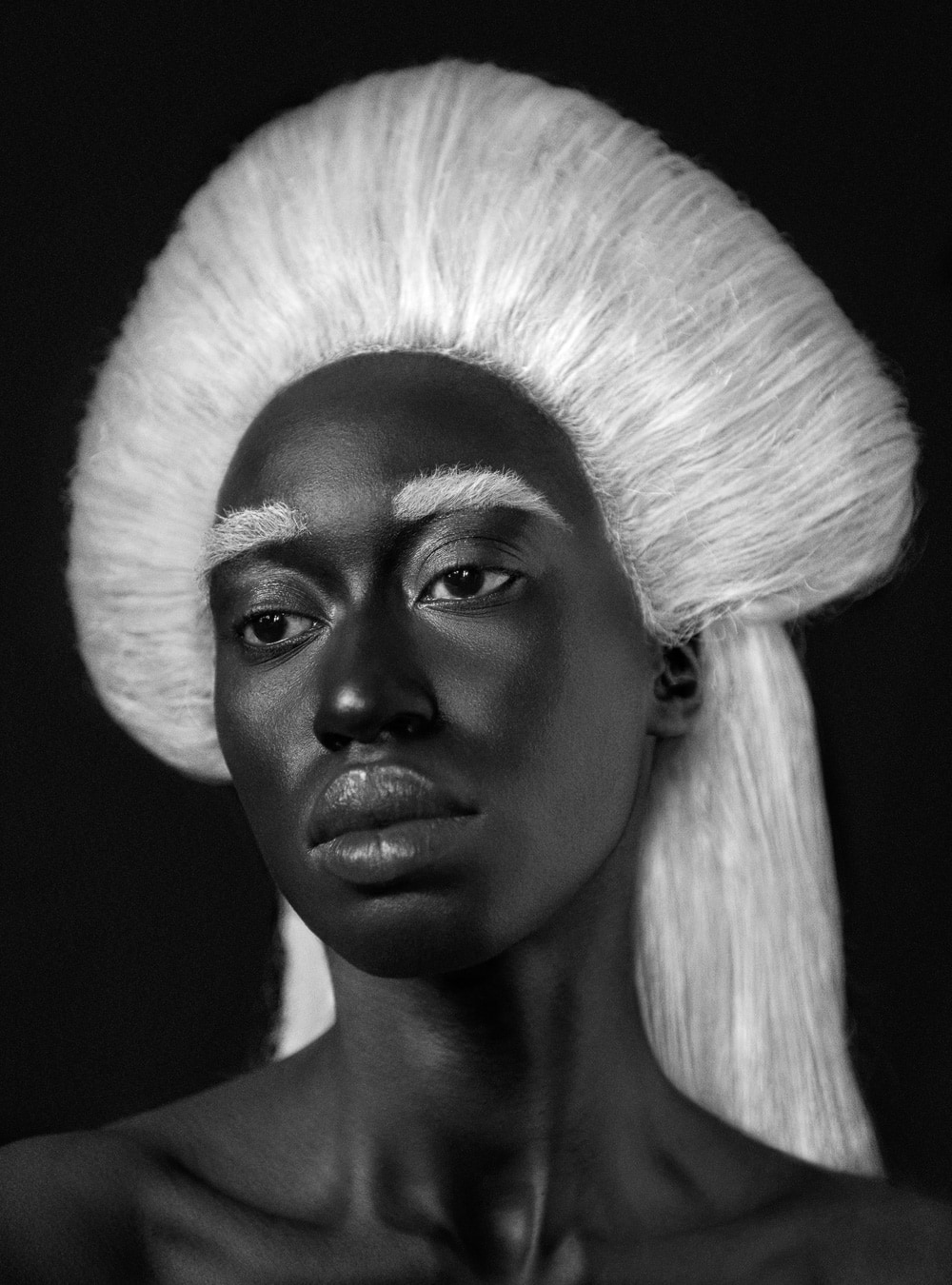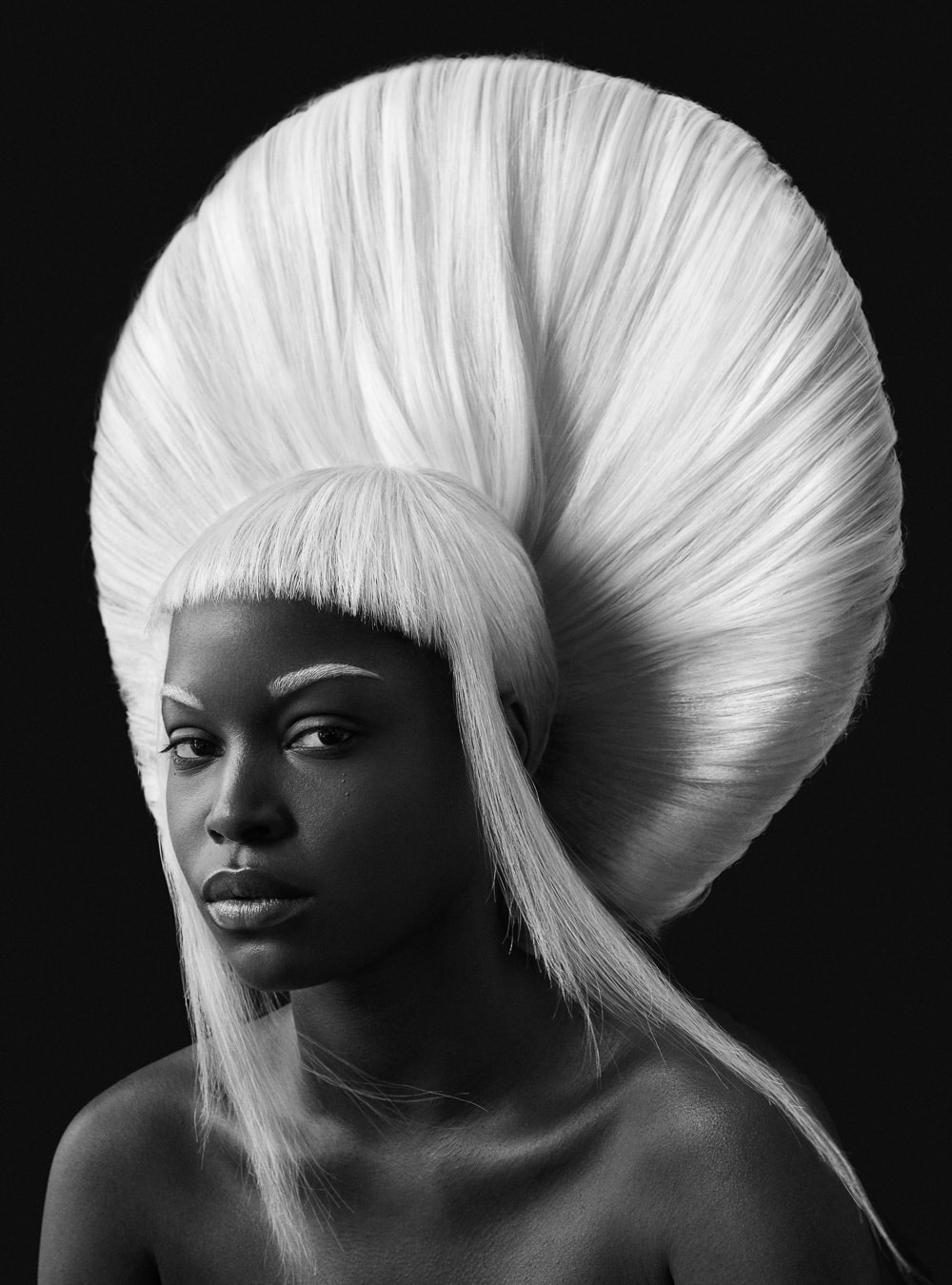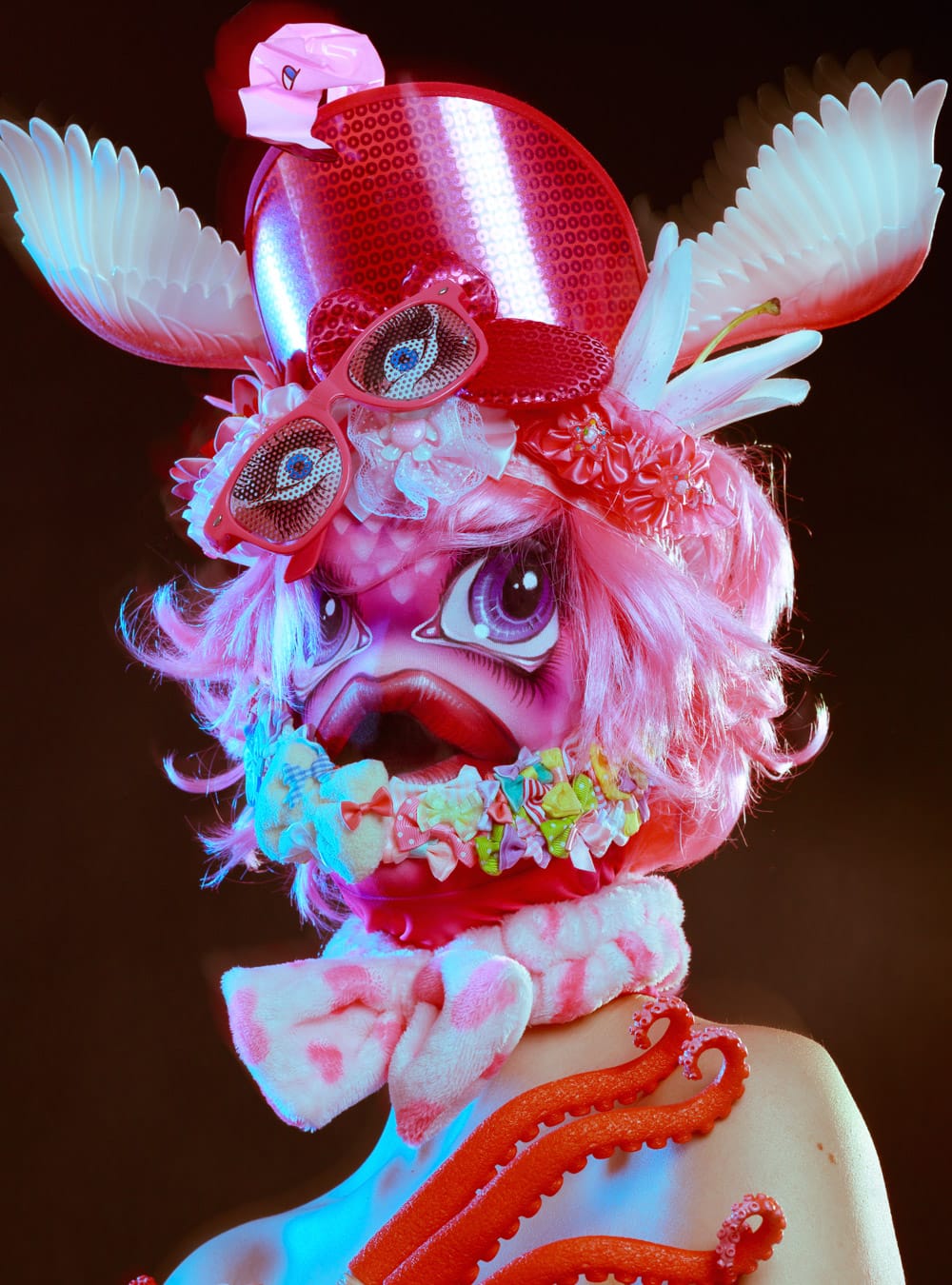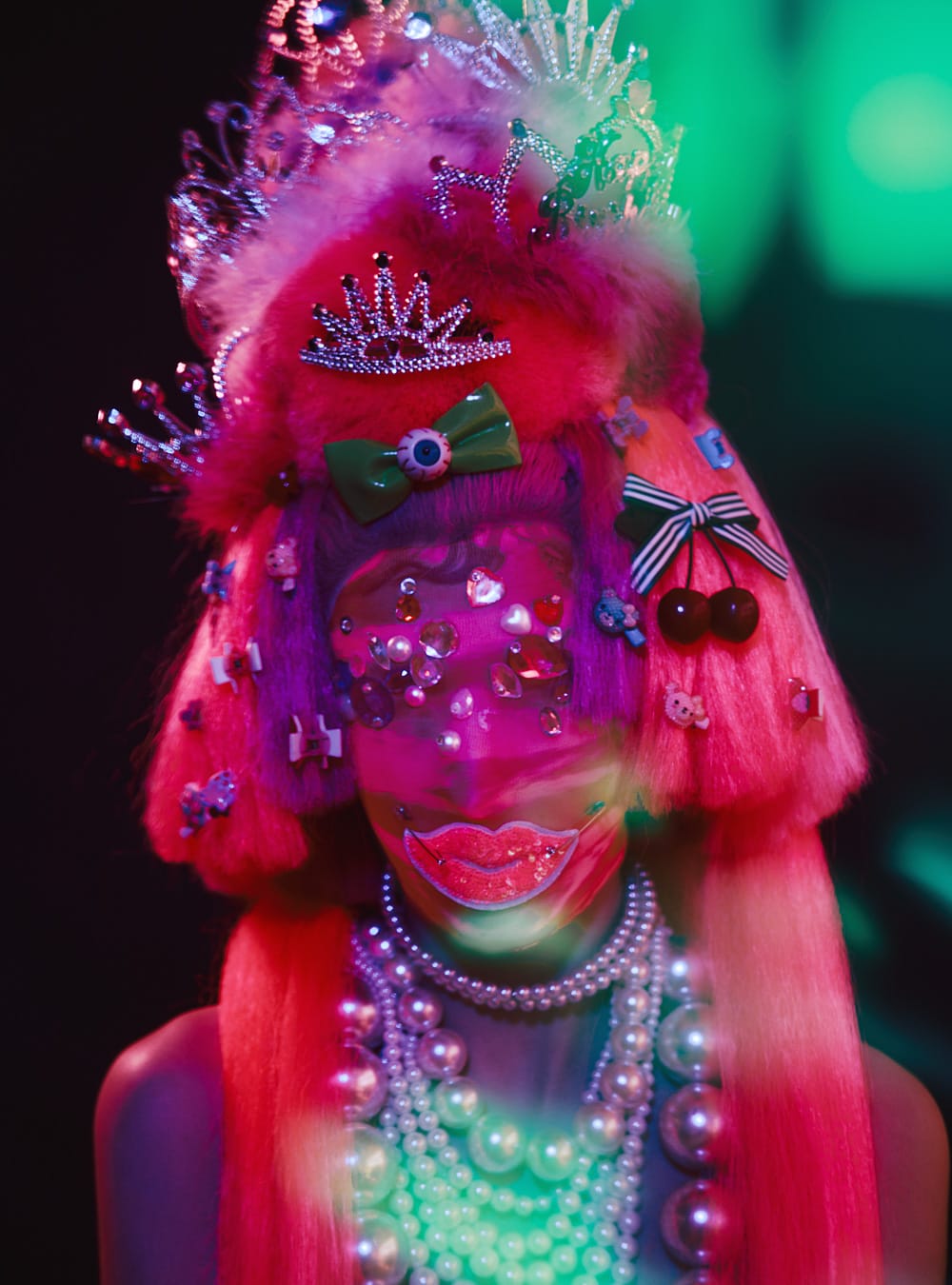- Antoine Mancini
- Antoine Mancini
- Antoine Mancini
PEOPLE: Theatre-turned-film hair stylist and wig specialist Antoine Mancini takes us through establishing his career and what to do when hair colours don’t match
Interview & Video Editing: Anastasia Eleftheriou
Filming: Aris Akritidis & Nathaniel Draper
Photography: Panos Damaskinidis
Words: Katharina Lina
Special Thanks to Antoine Mancini
Paris-based Antoine Mancini accidentally stumbled into hairdressing, and is now a period film hair specialist and expert wig technician. Growing up he discovered a fascination for forms and volumes, and slowly began sculpting to satisfy his hunger for artistic creation. Stone-sculpting was a natural stepping stone for Mancini to then discover another sculpting medium: hair. After learning the craft of hair, he was hired at the Comédie Française, where he was encouraged to become familiar with period styling and wigs. Now a lead hair stylist on live performance as well as cinematic film productions, we sit down with Mancini and talk about inspiring travels and goofy on-set fiascos.
"I was interested in actors, how they get into their characters, and how those characters are created"
How and when did you discover that you wanted to do hair for a living? I never actually wanted to be a hair stylist, but the work sort of came and found me. I did sculpture as a teenager, stone sculpture, and that really gave me an appreciation for volume and form. Since you can’t sculpt just anywhere, I amused myself by doing my classmates’ hair whenever there were parties. The hairstyles I gave them were totally out there, really quite impressive, and everyone started telling me that I should pursue it, that I was clearly made for it. But I didn’t want to be a hair stylist. I went to university for philosophy, and failed out, so I went looking for an apprenticeship. I was interested in woodworking, but I couldn’t find anyone taking apprentices. I did, however, find a hairdresser who wanted to take me on after I showed him some photos of my amateur work. So, I did the apprenticeship and really liked it, and I was completely hooked on the occupation, particularly the artistic side of it. I initially wanted to work in fashion, but the fashion world didn’t totally suit me. In 2005, I was lucky enough to be hired by the Comédie Française, and that’s really where I had a revelation as to my trajectory: I realised that I really liked period hairstyling. I was interested in actors, how they get into their characters, and how those characters are created—especially in places like the Comédie Française, where every aspect of the production is so finely-tuned. After that, I did an apprenticeship in wig-making at a major wig studio for movies, in Paris, and voilà. For the next few years I worked as an assistant hair stylist for films, and for the last 10 years I’ve been lead hair stylist, bringing my own creations to films, working with directors and actors to bring the characters to life.
You work with real hair, wigs, contemporary styles and period styles. Do you have a favourite one to work with? I have just as much affection for contemporary hairstyling as I do for period hairstyling, but with period hairstyling all of your talent and know-how is put on display and gets noticed. However, I really enjoy doing everything — I like doing Louis XV’s or Marie Antoinette’s hair just as much as I like doing ’30s, ’40s, or ’50s hairstyles, or even the naturalistic styling that we go for today.
Do you have your team that you work with on film sets, or do you always work with different people? You naturally keep working with people you get along with, where there’s a sense of cohesion, a shared style of work, a desire to do things well. Those are the most important things when you’re building a team around you. Of course, each film is different, and sometimes you have to call in other technicians who are specialised in certain areas; I’m not going to call in the same hairdressers for a period film as I would for a contemporary film. Period films, especially, require an entire field of specific knowledge and technical mastery that you don’t get from contemporary hairstyling.
You’ve previously said you like travelling. What trips or places have inspired you in your work? When I travel, I pay a lot of attention to what is done with hairstyling; the way people wear their hair, their style, the products they use, and their customs. The world of hairstyling is extremely rich, since each ethnicity and each culture has different hair and different ways of styling it. If you look at India, the women there deal with their hair completely differently to women in Europe. Afro hairstyles are really interesting, extremely varied, and often unknown to Europeans. I also love learning about how people worked with hair at different historical moments, and what it meant. In Western societies, hairstyle generally corresponded to social status; it was a way of differentiating and recognising one another. And we can see that in ancient Egypt, they practiced the same thing, but it was even more pronounced, because each hair style denoted a specific social group. Hair styling has always been a part of culture, whether we’re talking about China or the hair styling of different ethnic groups from islands in the Atlantic or Oceania. I’m quite moved by our history. I can see a common thread from ancient Greece up to today. I see how history has influenced style, and how styles have influenced history. When ancient Rome or ancient Greece were at their pinnacle of sophistication, their hair styling was equally sophisticated. In more austere periods, like the Medieval era, when Christianity had a stranglehold on culture, there was a retreat from pastiche and cosmetics and beautification, and people went back toward the essentials, the simpler things.
Would you consider making commercial wigs and selling them to the public? At one point I did think about getting a workshop in central Paris, so as to be visible to the broader public. I do think that people these days are very aware of their image, and hair is of central importance to everyone. People don’t want to lose their hair, so I think wigs could have their moment in the public eye. I do have an idea for something that doesn’t exist yet, but I don’t want to say too much about it. We’ll see if the future allows it.
"It can be quite stressful, because suddenly you have to make an extremely important decision, and everything that's put on film stays on film."
What was the most stressful situation you’ve had with hair on a set and how did you overcome it? I had a pretty comical experience on one shoot — strange and goofy. I had to give an actor ’70s sideburns by gluing hair onto the young man. The problem was, he had such a particular strawberry-blonde colour that nothing in my kit could match it. There I was, faced with this conundrum, and so I asked him if he could trim the hair from his lower stomach — which he did — so that we could glue it on as sideburns. The colour matched perfectly, and only we knew where this hair really came from. But the character turned out very handsome.
Do you want to tell us about some of the films you’ve worked on recently, and the actors whose hair you’ve done? I’ve done quite a number of films over the last few years. In 2019 we have the new Albert Serra film, Liberté, coming out, which is a period piece, and we saw those wigs that I pulled out of the coffin. There are a number of films coming out in 2019 that I really like: Benoit Forgeard’s film Yves, which is going to be really, really funny; Albert Serra’s film Liberté, which has very special period hairstyles; and Roubaix, une lumière, a film by Arnaud Desplechin, with Léa Seydoux and Sara Forestier. Last year there was the film Les vieux fourneaux, with Pierre Richard; Guy, by Alex Lutz; and I really loved working on Les garçons sauvages, by Bertrand Mandico. I fell in love at first sight with Sophie Marceau on the film Mrs. Mills. In January, 2017, I won the Gaudi award for another Albert Serra film, called The Death of Louis XIV, with Jean-Pierre Léaud. It’s a beautiful film, and I was really touched to receive recognition from my fellow professionals for the work I did. I also want to thank my dear, dear colleague Deborah, who was at my side throughout all that work.
How do you work with all of these directors? Do they have different methods? Every director is different, and every director has their own unique way of approaching character creation. Some come in with very specific ideas in mind, and some have no idea at all. When a director comes with precise ideas, we try to assist them by showing them what is possible and what is not. We might also lend our ideas and opinions on the matter. There are some directors who have no idea, and they want you to bring the material to spark their imagination. Using books, or sources from the internet, you build up a look-book to present your idea. When creating characters for a film, it’s built between the costume designer, the director, the actor or actress, the composer, the make-up artist, and the hair stylist. When it’s an actor whom I don’t know and with whom I’ve never worked, I look at lots of photos, from films or otherwise, to get a feel for their face so that I can pre-formulate ideas for what will suit them. No matter what, the elements of a film don’t just appear; there are many steps. There’s a meeting with the director, a second meeting with the director and the actors, a third meeting with the director and the costume designer, and the make-up artist, and then there are tests for all sorts of things. Sometimes it can be quite stressful, even agonising, because suddenly you have to make an extremely important decision, and everything that’s put on film stays there, on the film. So it’s essential to be spot-on in your work.
- ANTHROPOLOGY OF HAIR
- ANTHROPOLOGY OF HAIR
- ANTHROPOLOGY OF HAIR
- ANTHROPOLOGY OF HAIR
- ANTHROPOLOGY OF HAIR
